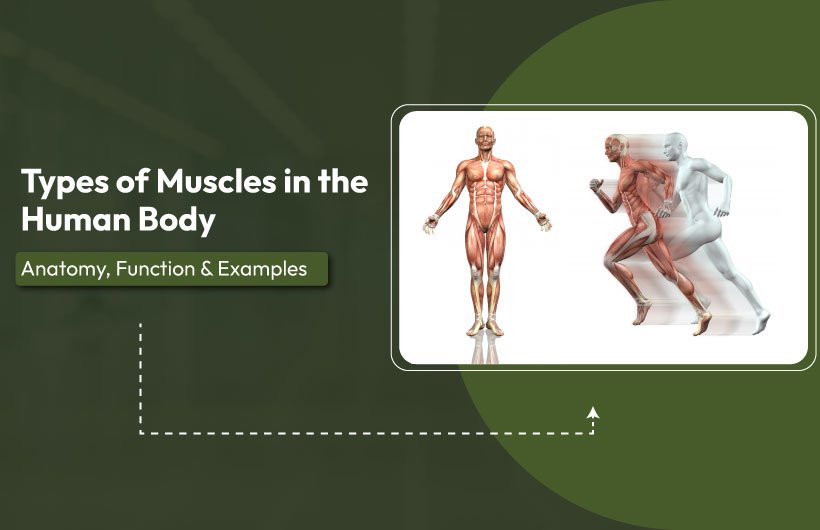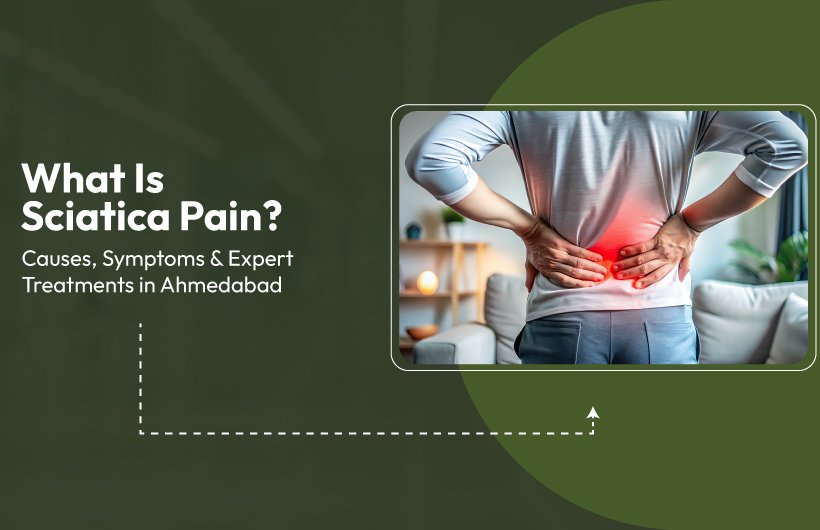Muscles play a crucial role in our everyday life, from walking, talking, and breathing to pumping blood and digesting food. They are the driving force behind all movement in the body, whether voluntary or involuntary. But did you know that the human body has over 600 muscles categorised into three main types? Understanding the types of muscles in the human body helps us not only appreciate the complexity of our anatomy but also better understand conditions that cause pain and mobility issues.
As a leading Pain Management Specialist in Ahmedabad at Anamay Pain Clinic, Dr. Megha Shah offers advanced, research-backed treatments for a wide range of muscle-related conditions. Recognised as a trusted Pain Management Clinic in Ahmedabad, the focus is on providing personalised care that addresses the root cause of discomfort. In this blog, we’ll delve into the three main types of muscles, understand their unique functions, and look at common examples to help you care for your muscle health better.
1. Skeletal Muscles (and Voluntary Muscles)
Skeletal muscles are the most well-known type of muscle in the human body. These muscles connect to bones and enable intentional actions like walking, running, smiling, and typing. These muscles work in coordination with the bones and joints to create movement and maintain posture.
Anatomy and Structure:
Skeletal muscles have a striated appearance under a microscope, showing alternating light and dark bands. These striations come from the arrangement of contractile proteins, action and myosin, which generate force and movement.
Function:
- Enable voluntary body movements
- Maintain posture and body position
Physical activity produces internal heat, which plays a key role in maintaining the body’s temperature balance.
Examples:
- Biceps (arm muscle)
- Quadriceps (thigh muscle)
- Deltoid (shoulder muscle)
- Abdominal muscles
Common Issues:
Skeletal muscles are often involved in muscle strains, sprains, spasms, and chronic pain conditions like fibromyalgia. Improper posture, overuse, or injury can lead to muscle inflammation or tension, which may require evaluation and treatment from a pain specialist.
2. Cardiac Muscle (Involuntary and Striated)
Cardiac muscles are found only in the heart. It is responsible for pumping blood throughout the body, and it works continuously without any conscious effort. This type of muscle is unique because it combines features of both skeletal and smooth muscles. It is striated like skeletal muscle but involuntary like smooth muscle.
Anatomy and Structure:
Cardiac muscle fibers are branched and connected by intercalated discs, which allow the heart muscle cells to contract in a coordinated and rhythmic manner.
Function:
- Maintains the rhythmic beating of the heart
- Ensure blood flow to all organs and tissues
Examples:
- The myocardium, which forms the muscular wall of the heart
Common Issues:
While cardiac muscles are generally not the focus of musculoskeletal pain, disorders such as myocarditis or cardiomyopathy can indirectly lead to chest discomfort or fatigue. In some cases, patients presenting with chest pain are to a pain management specialist after cardiac causes have been ruled out.
3. Smooth Muscles (Involuntary and Non-striated)
Smooth muscle tissue lines the walls of internal organs like the intestines, blood vessels, bladder, and uterus, where it supports essential involuntary functions. Unlike skeletal muscles, they are not under conscious control. These muscles help in performing essential internal functions, like moving food through the digestive tract or regulating blood flow.
Anatomy and Structure:
Smooth muscle cells have a tapered, spindle-like shape and do not display the striated patterns found in skeletal or cardiac muscle. Their contractions are gradual and can be maintained for extended periods without tiring.
Function:
- Move substances through internal passages (peristalsis)
- Regulate blood vessel diameter and blood pressure
- Control functions like urination and childbirth
Examples:
- Muscles in the stomach and intestines
- Walls of blood vessels
- Uterine muscles during labour
Common Issues:
Smooth muscle dysfunction can cause conditions like irritable bowel syndrome (IBS), vascular pain, or pelvic floor dysfunction. Dr. Megha Shah is a leading pain management expert in Ahmedabad, offering advanced, non-surgical treatments for chronic and acute pain, and may treat such conditions using physical therapy, medications, or nerve blocks, depending on the diagnosis.
How Muscle Pain is Managed
Muscle pain can stem from injury, overuse, stress, poor posture, or underlying medical conditions. Anamay Pain Clinic focuses on identifying and addressing the underlying causes of pain, rather than just relieving its symptoms.
Dr. Megha Shah’s approach includes:
- Detailed clinical assessment
- Advanced diagnostic tools
- Trigger point injections
- Ultrasound-guided procedures
- Physiotherapy and posture correction
- Non-surgical interventions
- Regenerative therapies when appropriate
Whether you’re dealing with chronic neck pain, muscle tightness in the back, or unexplained joint stiffness, addressing muscle imbalances or dysfunction is often a key step in long-term pain relief.
Why Understanding Muscle Types Matters
Each type of muscle plays a distinct role in the body, and problems in one type can impact overall function and well-being. For instance, skeletal muscle issues can affect movement and cause joint stress, while smooth muscle dysfunction might lead to internal pain that mimics other conditions. Even heart-related concerns may be present with muscle-related symptoms.
When you’re facing ongoing pain or muscular discomfort, consulting a qualified Pain Management Specialist in Ahmedabad, such as Dr. Megha Shah, ensures you receive personalised care tailored to your condition.
Conclusion
The human body is an intricate system powered by three main types of muscles: skeletal, cardiac, and smooth. While each has unique characteristics and functions, they all work together to support life and movement. Understanding how these muscles operate can help you make informed decisions about your health and seek timely care when something doesn’t feel right.
If you’re experiencing persistent muscle pain, stiffness, or weakness, don’t ignore the symptoms. At Anamay Pain Clinic, Dr. Megha Shah offers compassionate and comprehensive care to help you move, live, and feel better muscles at a time.








